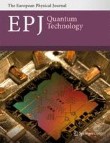Space-based tests of fundamental physics have a long history, from early tests of general relativity to more recent missions such as gravity probe B and proposed missions to test the equivalence principle (STE-QUEST) and gravitational decoherence (MAQRO). These more recent proposals make extensive use of quantum technologies, from atomic clocks to weak force sensors. Deploying any technology into space pushes specifications to the limit and this will be especially true for quantum-enabled technologies. Recent advances in space technology as developed for experiments such as LISA and LISA Pathfinder have allowed researchers to optimally harness the space environment for quantum experiments.
This thematic series is dedicated to all aspects of space-based quantum technologies from fundamental physics to quantum communication protocols including proposals for new space-based quantum experiments as well as terrestrial experimental tests of new quantum technologies for space deployment
Thematic Series submissions are eligible for a waiver. Please request this during submission and state the reason for the request as "submitting to a Thematic Series”.
Submission Instructions: Before submission, authors should carefully read over the Instructions for Authors. Prospective authors should submit an electronic copy of their complete manuscript through the SpringerOpen submission system according to the submission schedule. They should choose the correct Thematic Series in the “sections” box upon submitting. In addition, they should specify the manuscript as a submission to the “Thematic Series on Space Applications of Quantum Technology” in the cover letter. All submissions will undergo initial screening by the Guest Editors for fit to the theme of the Thematic Series and prospects for successfully negotiating the review process.
Lead Guest Editor:
Dr. Rainer Kaltenbaek, Vienna Center for Quantum Science and Technology, Faculty of Physics, University of Vienna, Boltzmanngasse 5, A-1090 Vienna, Austria, rainer.kaltenbaek@univie.ac.at
Guest Editors:
Prof Dr Markus Aspelmeyer, Quantum Optics, Quantum Nanophysics and Quantum Information, Faculty of Physics, University of Vienna, Boltzmanngasse 5, 1090 Vienna, Austria, markus.aspelmeyer@univie.ac.at
Dr Rupert Ursin, Institute for Quantum Optics and Quantum Information, Austrian Academy of Sciences Boltzmanngasse 3, A-1090 Vienna, Austria, rupert.ursin@univie.ac.at
Dr Alexander Ling, Centre for Quantum Technologies, National University of Singapore, Block S15, 3 Science Drive 2, Singapore 117543, cqtalej@nus.edu.sg
Prof Gerard Milburn (Editor-in-Chief), Centre for Engineered Quantum Systems, The University of Queensland, Australia, milburn@physics.uq.edu.au
Submissions will also benefit from the usual advantages of open access publication:
- Rapid publication: Online submission, electronic peer review and production make the process of publishing your article simple and efficient
- High visibility and international readership in your field: Open access publication ensures high visibility and maximum exposure for your work - anyone with online access can read your article
- No space constraints: Publishing online means unlimited space for figures, extensive data and video footage
- Authors retain copyright, licensing the article under a Creative Commons license: articles can be freely redistributed and reused as long as the article is correctly attributed
For editorial enquiries please contact editorial@epjquantumtechnology.com.
Sign up for article alerts to keep updated on articles published in EPJ Quantum Technology - including articles published in this thematic series!
